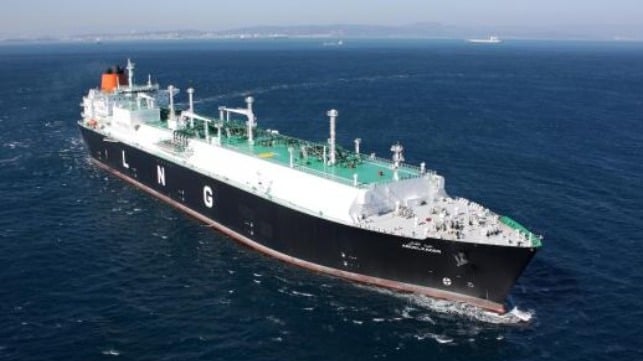Hyundai Plans First Ocean-Going Autonomous Ship Voyage by Year’s End

Autonomous ship operations will take a giant step forward later this year as South Korea’s Hyundai Heavy Industries plans to operate the first ocean-going demonstration voyage of an unmanned system. According to the shipbuilding company, before the end of the year, they will undertake a voyage using one of the large, new liquefied natural gas carriers (LNG) currently under construction at one of the company’s shipyards.
Hyundai is involving several parts of the group as it seeks to move forward aggressively with automation in different parts of its operations. The group launched a dedicated company focused on autonomous operations called Avikus Corp. which has been working with the shipyard on the development of a system they call Hyundai Intelligent Navigation Assistant System (HiNAS) 2.0. Outside the maritime world, Hyundai has also demonstrated autonomous equipment including a warehouse forklift.
For the upcoming demonstration voyage, Hyundai plans to deploy the system on a 985 foot long newly built LNG carrier currently being built within its Korea Shipbuilding & Offshore Engineering Co. Depending on the timing of the completion of the ship and other factors, the voyage will either be on the Pacific or the Indian Ocean. According to the company, it will be the world’s first transoceanic voyage where the system will manage the ship only overseen by the crew onboard.
HiNAS, jointly developed by Hyundai Heavy Industries Group and KAIST, uses artificial intelligence (AI) and augmented reality (AR) to automatically recognize nearby ships through ship camera analysis to determine the risk of collision. In the first version of the system, it informed the navigator and aided in situations where visibility is not secured such as at night or in sea fog. The infrared cameras can be used to comprehensively analyze and provide information such as the location and speed of obstacles.
In the second version of the system that will be used on the LNG carrier test, the system automatically recognizes objects surrounding the vessel and route to eliminate the risk of collision. The vessel will also be equipped with the Hyundai Intelligent Berthing Assistant System (HiBAS), which provides a full view of the ship when berthing. Based on the results of the demonstration, the group said it will decide on the commercialization strategy for its autonomous navigation solution.
Previously, Hyundai conducted a first level test aboard a 250,000 dwt bulk carrier operated by SK Shipping. In that test, the system provided decision-making support to officers including the navigator and captain. The upcoming test moves to the next level where the crew is onboard overseeing the operations. At the third level, the system would control most of the ship’s operations with only a minimum number of crew aboard, while at the highest level the ship operates entirely autonomously without a crew aboard.
Recently, Hyundai demonstrated a 12-passenger vessel operating in fully autonomous mode sailing through the canals in South Korea. Hyundai expects to have the first commercial application for a leisure craft available in 2022 and the first version for smaller passenger crafts to be available by 2023.
Hyundai Heavy Industries is also participating in the state-led five-year autonomous navigation technology development project. South Korea is investing $140 million to develop the autonomous shipping market targeting as much as a 50 percent share of the market which is projected to reach $150 billion by 2030.
